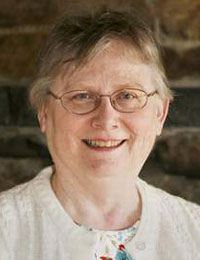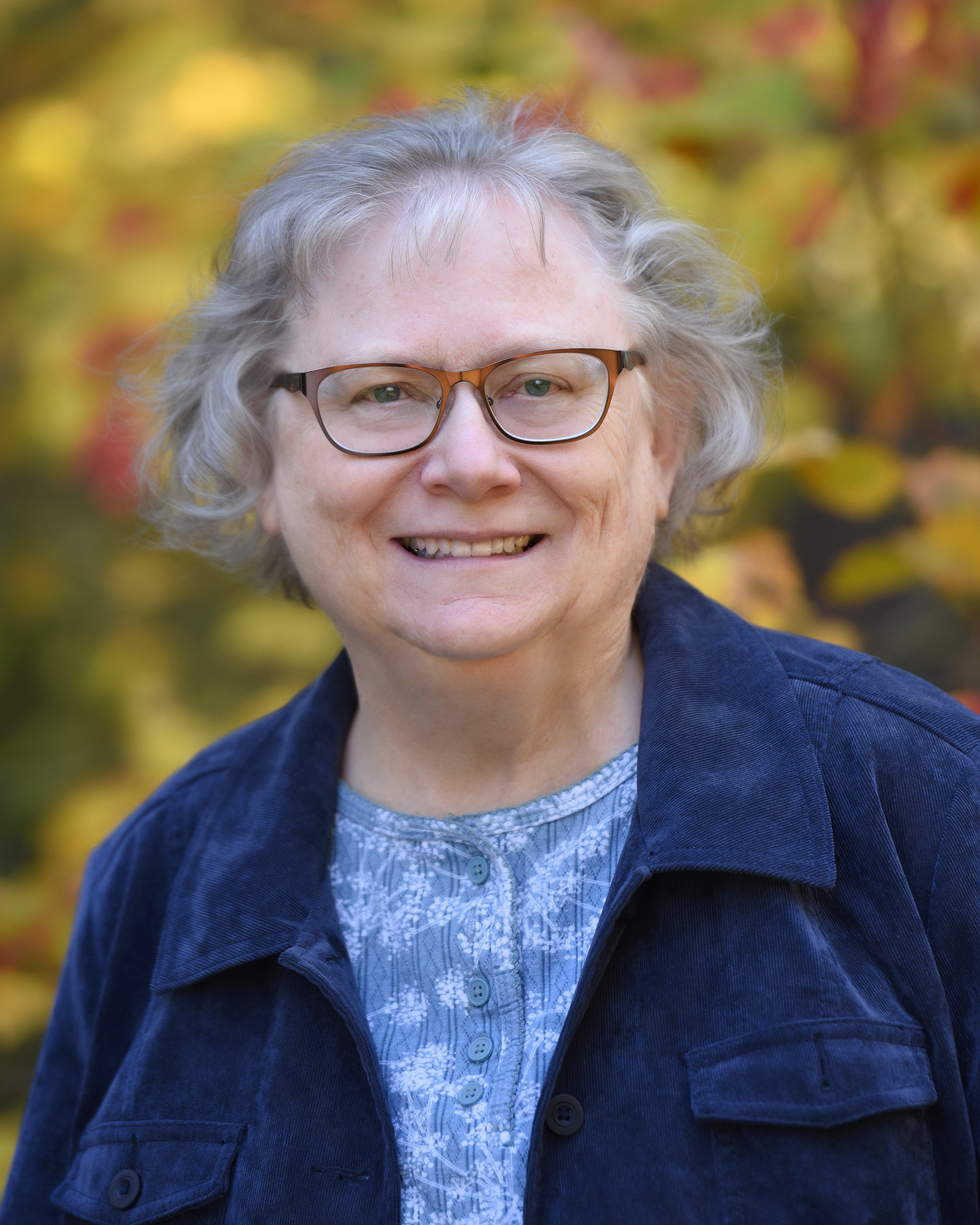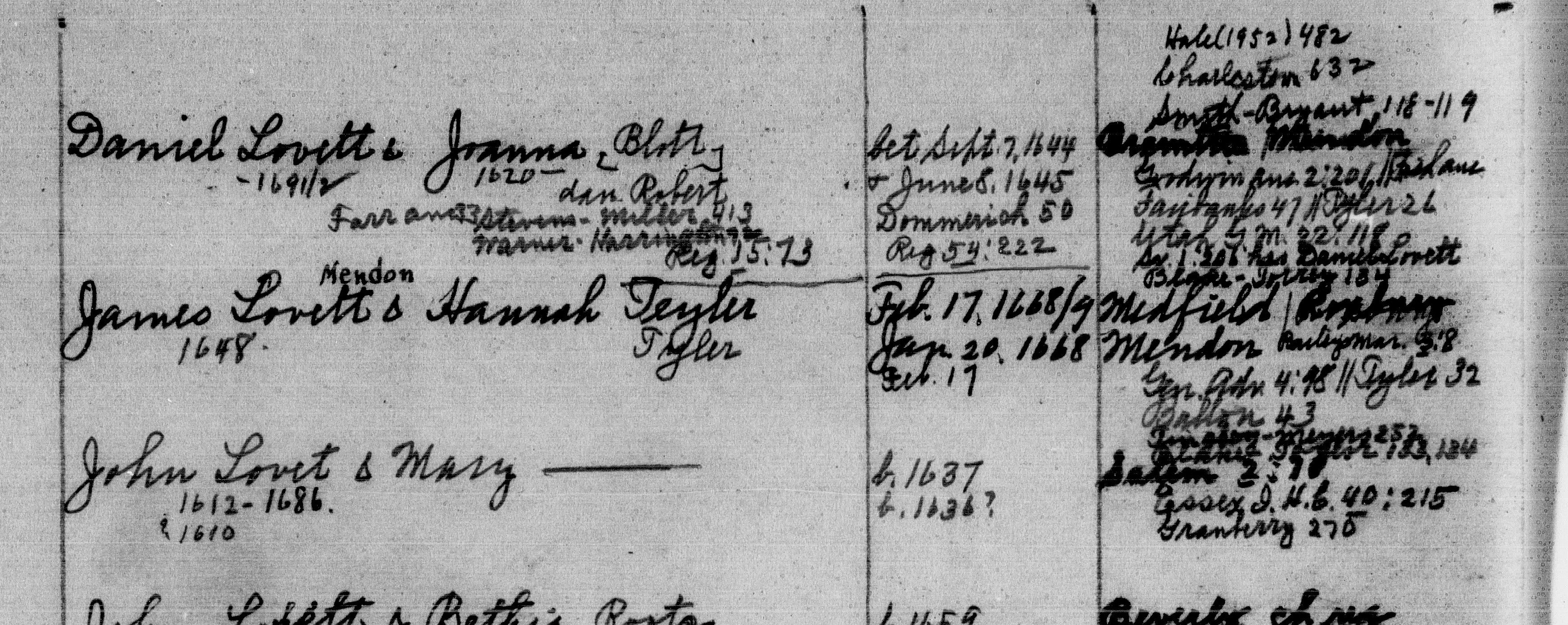 Santa Claus arrived in July with a portable hard drive full of the newly-digitized images from the microfilm of Clarence Almon Torrey’s twelve-volume manuscript, New England Marriages Prior to 1700. It has been forty years since I last had quality time with Clarence. Hard to remember the months and months spent in the stacks going through every book in the library to match his “short” citations and create a bibliography.
Santa Claus arrived in July with a portable hard drive full of the newly-digitized images from the microfilm of Clarence Almon Torrey’s twelve-volume manuscript, New England Marriages Prior to 1700. It has been forty years since I last had quality time with Clarence. Hard to remember the months and months spent in the stacks going through every book in the library to match his “short” citations and create a bibliography.
For readers who haven’t been introduced, Clarence Almon Torrey spent decades in the library at NEHGS extracting every mention of a seventeenth-century New England marriage from nearly every book, pamphlet, and manuscript in the collection up until about 1960. He first wrote the entries on a sheet of paper as he extracted them from the books, then cut the paper into strips, alphabetized the strips in boxes and finally copied the alphabetized listing on to full sheets of paper again. No one has actually counted how many marriages Clarence collected, but the estimate is about 37,000. In 2011 the manuscript was completely transcribed, including citations with bibliography, and published in three large volumes available in the NEHGS bookstore; the compilation is now also available as a database on AmericanAncestors.
No one has actually counted how many marriages Clarence collected, but the estimate is about 37,000.
All well and good, except the process of transcribing handwritten material, often done in different pens and pencils, smudged and overwritten, has limitations. Among these are illegible or mistyped page numbers and untangling the citations for one marriage from another when they run over the space allotted. Clarence had a regular system of spacing marriage entries, regardless of the number of citations he sometimes had to “squnch” in. I have already found transcribed entries in which a citation from one marriage slipped into a neighbor’s list. The scans are wonderfully clear, but there are still illegible words and numbers that may not be decipherable even on the original manuscript.
Being able to compare the scans with the typed transcription makes a great difference. The scan shows Torrey’s original arrangement, where the marriage date was isolated in its own column and the town of marriage was prominently written beside it. By necessity, the transcribed version had to be strung together in a continuous paragraph where one easily loses track of what goes with what.
The process of posting these scans as a browsable database on AmericanAncestors is underway. In the meantime, I am now the official (alicia.williams@nehgs.org) contact for any questions about Clarence’s manuscript. If you are having trouble interpreting the transcribed version, let me know, and I will see if the scan makes things clearer.
Share this:

About Alicia Crane Williams
Alicia Crane Williams, FASG, Lead Genealogist of Early Families of New England Study Project, has compiled and edited numerous important genealogical publications including The Mayflower Descendant and the Alden Family “Silver Book” Five Generations project of the Mayflower Society. Most recently, she is the author of the 2017 edition of The Babson Genealogy, 1606-2017, Descendants of Thomas and Isabel Babson who first arrived in Salem, Massachusetts, in 1637. Alicia has served as Historian of the Massachusetts Society of Mayflower Descendants, Assistant Historian General at the General Society of Mayflower Descendants, and as Genealogist of the Alden Kindred of America. She earned a bachelor’s degree from the University of Connecticut and a master’s degree in History from Northeastern University.View all posts by Alicia Crane Williams →
